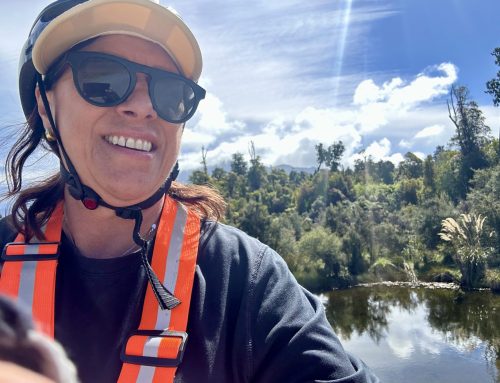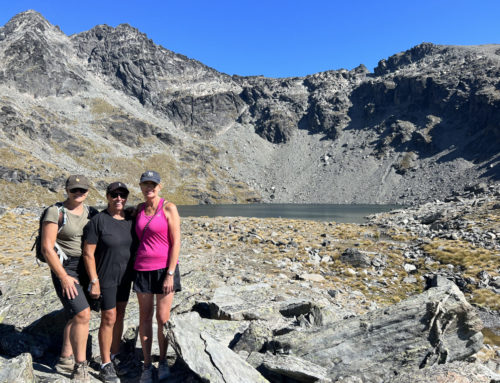The birds on Tiritiri Matangi
The Takehe, with its rotund shaped butt, like our beloved Kiwi was once thought to be extinct and it’s no wonder. Round and flightless, this bird doesn’t go much faster than me. I thought it might be related to the Kiwi, but it’s actually from the same family as the Pukeko. The distinctive red beak and colouring is a give away.

Takahe
The Kokako is also a draw card to the island and is very rare. Although I did not see one we did hear its distinctive birdsong, reportedly the most beautiful in the world. However, we did also see a Stitchbird, Saddleback and two native pigeons with breast plume almost emerald-green.

New Zealand native pigeon
Walking tracks on Tiritiri Mantangi
If you are a walker there are some great, well-marked tracks around the island.

Wattle Track loop (1 hour)
Kawerau Track loop (3 hours)
Island Loop (4 hours) – reasonable fitness required
It’s also possible to stay on the island. A bunk house can be booked for overnight stay www.doc.govt.nz however, the facility has limited availability as it is primarily used by volunteers and researches.
Getting there
Fullers 360 degree discover cruises run a service to the island costing $70 return.
On the ferry to Tirtiri Matangi it’s well worth purchasing a brochure with information and images of the birds. Also, a guided work can be booked on-line for $10 (with your ticket). All proceeds go to support the island admits conservation work.
Note: Tititiri Matangi is a special sanctuary for rare wildlife and is also a scientific reserve. There are no introduced pests making it a very safe environment for the endangered species so it is imperative you check your bags are rodent and insect free. No open bags are allowed in the ferry and all food must be packed in sealed containers.







Leave A Comment